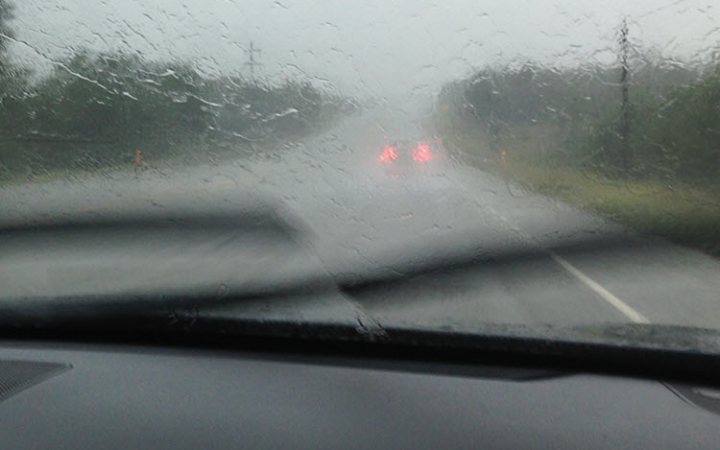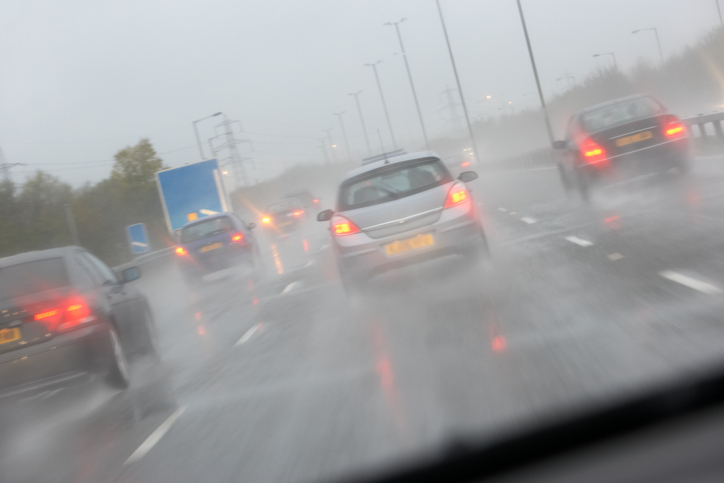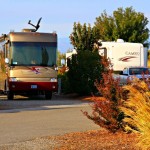If the predictions for this winter’s El Nino are even close to accurate, we’re in for a wet winter. If a storm catches you out on the road, here are some tips for remaining in control of your RV and proceeding as safely as possible.
- Slow down. Your RV will handle differently in slippery, wet conditions, and your vision will be compromised by sheeting rain across your windshield.
- Increase the distance between you and the vehicle in front of you. You can’t stop in an emergency in the same distance as on dry pavement.
- With stormy weather also comes darker skies. Turn on your headlights to become more visible to other drivers.
- Be extra alert to vehicles around you. You will find that there are many drivers that do not slow down under these conditions and they are a hazard (be prepared for them to do something stupid) not only to themselves but to you as well. Give them lots of space.
 There will be lots of water on the road. This could gather in huge puddles that could suddenly slow you or the vehicle in front of you. If you can avoid the puddle, do so, or slow down before you enter it. Tap your brake pedal after leaving the puddle to help dry the rotors.
There will be lots of water on the road. This could gather in huge puddles that could suddenly slow you or the vehicle in front of you. If you can avoid the puddle, do so, or slow down before you enter it. Tap your brake pedal after leaving the puddle to help dry the rotors.- Sheeting water on the road could cause your RV to hydroplane (“surfing” on top of the sheeting water with very little—if any—contact with the road) and loss of traction. Take your foot off the gas pedal and steer straight in the direction you are headed.
- The road could be extremely slippery from a buildup of oil and grease mixing with the water. Start braking earlier and with reduced pedal pressure. This will also alert the driver behind you that you’re slowing down.
- Avoid crossing through running water if you aren’t sure of the depth or the flow is swift (note the videos you see on TV of vehicles being swept along with the current). Don’t take a chance—choose another route or wait until the flooding subsides.
- Stay well back of large trucks or buses. The spray from their tires makes it difficult to see. Avoid passing unless absolutely necessary, and then pass as safely as you can.
- Take a break. If you feel you do not have control of your RV, pull off the road and wait out the worst of the storm. Turn on your hazard lights so others know you are there. Be patient. The storm will pass and then you can continue on your way—safely and with less stress.
You can find Bob Difley’s RVing ebooks on Amazon Kindle.



